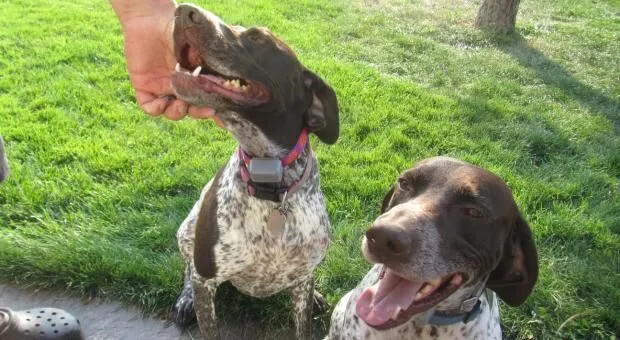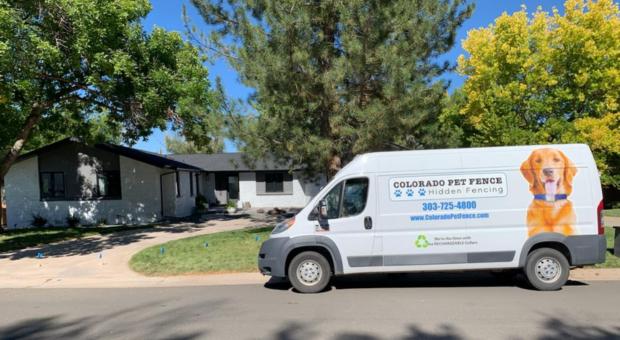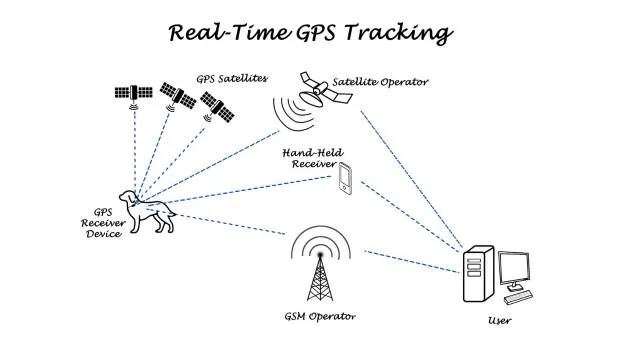Are Electric Dog Fences Cruel? — Separating Fact From Fiction
There is still a debate about whether hidden pet fence are cruel or not when their shouldn’t be…they are completely humane if the right type of fence is set up properly and you train your pet on the system.
The Promise of Wireless Dog Fences

When you get a dog, ensuring the safety and well-being of your pet is paramount. The promise of wireless dog fences to keep your dog safe, while providing them freedom has sparked contentious debates, with claims of cruelty often at the forefront.
As a seasoned pet owner or someone considering adopting a pup, navigating through the conflicting opinions can be overwhelming. Are electric dog fences truly inhumane, or are they a viable option for responsibly containing your beloved pet(s)?
In short, hidden fences are not cruel, as long as you’re using the right type of fence and have proper training for your pet on the containment system.
It is only when you use the wrong type of fence and don’t train your dog that you are likely to cause undue stress to your pet.
So what type of fence is the wrong fence and which is the right type? We’ll get into that next.
But first…
Why Listen To Me When It Comes To Electric Pet Fences?
My name is Dale, the owner and operator of Colorado Pet Fence, an electric dog fencing installation company I started 15 years ago. I’ve worked on thousands of successful installs of wireless pet fences for pet owners in the Colorado area and trained a crew to safely install these fences on both small properties and big acreages.
We offer a 100% guarantee of containment on our system installs because they are that effective and we know that our customers will have a positive experience, as well as their pets.
You can even read our over 250 5-star reviews as proof that people are happy with these installs and that their pets are safe and not being negatively impacted by the fences we install.
I’ve worked with veterinarians and I’m also a dog owner myself, and wouldn’t dare subject my dogs to cruelty.
So why are we able to ensure our customers and their pets are happy, while many people debate whether these fences are humane or not?
To understand why, you’ll need to know the difference between the types of electric dog fencing that are available.





GPS & Wireless vs. Wired Dog Fences
Hidden fences, electric dog fences, wireless fences, underground dog fences — many people use these terms interchangeably, but there are different types of fences within this grouping of fences and the type of fence makes a big difference to how it works and how effective and safe it is for your pet.
GPS & Wireless Pet Fences Are Inconsistent
GPS dog fences are powered by satellites and work off a GPS signal. This technology is what companies Halo or SpotOn use.
These systems are known for just being inaccurate. There is drift when it comes to these systems because there is no physical boundary wire around the area of your yard (sometimes 10-20 feet, sometimes significantly more!).
People have reported of these types of wireless dog fences not working as advertised — there are instances of people’s dogs getting corrected inside the virtual boundary you create with the system, even inside the home while the dog is at their feet when watching T.V or the GPS doesn’t even register the dog has left the yard.
Not only is this worrisome because you don’t know if your dog will be kept on your property by the system, but it can be very stressful for dogs because it has no clear indication of which areas it’s allowed to be or not. These fences shouldn’t be (and don’t if you install the right fence correctly) correcting your dog randomly. They should only get a correction when absolutely necessary (aka when trying to leave the yard).
Wireless pet fences
Wireless pet fences do not rely on satellites, but a wireless unit that you place in your home somewhere and it emits a circle radius around the base unit (these systems are probably some of the cheap options you see on Amazon). This doesn’t allow for flexibility of aligning the boundary to the shape of your property.
You’re limited to setting it to extend out only as far as the closest boundary of your property, which is likely to get confusing for your dog when it gets corrected in other parts of your yard that are further out or risk an escape to the neighbors yard if you extend it to the furthest parts of your property.

The main problem with both these systems is that they are inconsistent when it comes to providing corrections.
Many people think that when you set up these systems for your dog, that it’s getting corrected all the time. This could not be further from the truth (or at least should be).
In reality, your dog should only be corrected at times when it is actually trying to leave your property.
If a system is correcting your dog within your property, then you have a problem.
A dog (or even us for that matter) likes to have consistency. If the dog knows that passing a certain point will initiate a correction, then the dog will avoid crossing that point and therefore not get corrected.
If the dog is getting corrected all over your property with no consistent pattern, that would be harmful on the dog’s (or any animals) psyche. It can’t and won’t understand where is okay, where is safe, and will start to fear being corrected all over the premises. That’s just chaos and even you or I would go mad in that type of situation. Because these systems are so inconsistent with their corrections, they have the potential to change behavior in dogs, possibly creating anxiety or aggression.
So, what’s the best way to avoid this?
The alternative is a wired underground dog fence.

Wired Dog Fences Are Consistent (And Humane!)
These types of hidden pet fences work differently from the other wireless systems in that they have a physical boundary wire that is placed underground around the perimeter of the property. The wire is hooked up to a small control panel the size of a sprinkler control box, typically in the garage, that emits a frequency through the wire.
The dog collars that come with the pet containment system then picks up on that frequency as the dog approaches the wire and gives them a warning beep. If the dog continues to advance towards the boundary line, then they get a small static correction (like the static shock you get from a doorknob). These corrections can be set from very, very mild for small dogs to a strong correction for big dogs or a particularly stubborn dog. Each collar should be able to be programmed individually for each dog you have on the containment system (our systems have this ability).
These are the only types of electric dog fences we install because they are safe and reliable — it’s really the only option in our eyes if you want to guarantee safety and well-being for your dog.
There isn’t a virtual “barrier” that can change or drift based on location or roof/siding materials on the house. There is a physical wire in place around your yard that sends a signal to warn and correct the dog if necessary.
These types of systems are consistent for your dog, keeping them happy, healthy, and safe within the boundaries of your property.
But having the right type of system is only one part of the equation. You’ll also need proper training for the dog to make sure it’s effective and safe.
Training For Your Dog Is Important To Teach Its Boundaries
Training is imperative to having an electric pet fence system work for you and your pet. Without properly training the dog, it will not understand its boundaries, could affect the dog negatively, and cause a failure of the system.
With proper training, your pooch will have clear boundaries it understands not to cross and understand that the warning beep it receives is an indicator to stop and avoid a correction. The point of training is to ensure the system works for your pet, that they understand their boundaries, but also to help them avoid corrections altogether.

I had a customer once, where she did a big landscaping project and tore up her fence along with the wire from the underground dog fence we installed. She didn’t call me for one year because her dog stayed in the yard and had no idea that the fence was down due to how well her dog was trained on the system.
If the dog were out getting corrections every day, that dog would know the next day that the fence was down. That just goes to show how important training is and that when installed and introduced to the pet correctly, these systems are effective and the dog is not out getting corrections all the time.
Now you can install an underground wire system and train your dog on the system yourself, but this can be tricky.
There is a lot to consider when it comes to installing a wired dog fence. Like, how far down do you put the wire? How do you deal with garden areas or driveways? How are you going to protect the wire from damage?
You can also try to train your dog on your own, but it’ll take more time if you don’t know the correct methods and you risk possible failure of the system working for you.

You Can Ensure A Safe And Humane Containment System Through A Professional
The type of fence and training matters when it comes to a humane dog containment system. Getting a cheap fence from Amazon may seem like a quick, nice (on the wallet) option, but it comes at the expense of keeping your dog safe and happy.
You can do all this yourself, but again, there is a lot to consider when doing the install and you’ll need to take the time to learn how to train your dog properly on the system and then take the time to do all the work.
With a professional’s help, you can ensure that the electric dog fence works and that it’ll provide a positive experience for your pet that will keep them safe. It is a one day process for us to install a hidden fence, and we start the dog on the training that same day.
When you hire a professional dog fence installation company, you get the experience of someone who does this day-in, day-out. They’ve likely seen every scenario and know what needs to be considered for each install to avoid any problems. And any installer worth their salt should offer a guarantee (we offer 100% containment guarantee or your money back).
I’ve personally completed thousands of installs and have trained several thousand dogs on our containment system. Many of our happy customers include Veterinarian dog owners. Our fences have worked for years because we install them correctly with the right components, provide the right training, and continue to offer a service that even takes care of any issues after the installation. You can read the reviews here and see for yourself how well they work when set up properly.
If you are in Colorado, we can install and service an electric pet fence for you. You’ll get the right type of fence and training mentioned on this page, so you can be certain your dog is in good hands.
You can call us at 303-725-4800 or contact us through the form on our website. Feel free to reach out to get more information, ask us any questions you have about electric dog fences, or get a free quote from us for an installation on your property today.
